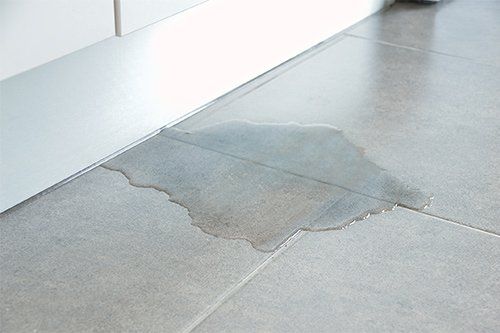Identifying the Primary Reasons for Leakage in The Home
Identifying the Primary Reasons for Leakage in The Home
Blog Article
The content down below about How to Find Water Leaks is fairly stimulating. Give it a try and draw your own ideas.

Leaks not just trigger waste of water but can additionally trigger unneeded damage to your house and advertise unwanted natural development. Unfortunately, water leakages may go undetected since a lot of the pipework in our house is concealed. By looking and comprehending for everyday scenarios that create leakages, you can shield your home from future leakages and unnecessary damages. Today, we will certainly check out six leak triggers that may be creating your pipes to drip.
Intruding roots
A lot of water leakages begin outside the house rather than inside it. You could see wet patches or sinkholes in your yard, as well as that may imply that tree roots are invading water lines triggering water to leak out.
Rusty water supply
As time goes by, your plumbing system ages and rust such as corrosion may begin eating away the pipes. This could be the source of staining or warping on your pipes. This asks for an assessment with your plumber quickly. Take into consideration replacing the pipelines given that they are at a higher threat of corrosion than the newer models if our plumbing system is old.
Faulty Pipe Joints
The factor at which your pipelines connect is frequently the weakest link in the waterline. Pipeline joints can deteriorate with time, causing water leakages. The majority of pipe joints are not quickly noticeable. If you have noisy pipes that make ticking or banging sounds, especially when the hot water is turned on, your pipe joints are possibly under a great deal of stress. It is suggested to have your plumber check your system yearly.
Instant temperature level adjustments.
Extreme temperature level modifications in our pipelines can trigger them to broaden as well as acquire all of a sudden. This development and also tightening may cause splits in the pipelines, especially if the temperature level are below freezing. It would certainly be best if you kept an eye on just how your plumbing works. The visibility of the formerly pointed out situations regularly suggests a high threat.
Poor Water Connectors
At times, a leakage can be triggered by loosened hoses and also pipes that supply your devices. Most of the time, moving is what creates the loose water Connections. You might locate when it comes to a cleaning device, a tube might spring a leakage as a result of drinking throughout the spin cycle. In case of a water connections leak, you might notice water running directly from the supply line or pools around your appliances.
Clogged Drains
Clogged drains may be irritating as well as inconveniencing, however they can often wind up causing an overflow resulting in break pipelines. Maintain removing any materials that might drop your drains pipes that might block them to avoid such hassles.
All the above are root causes of leakages but not all water leakages arise from plumbing leakages; some leakages could come from roofing leaks. All leaks ought to be repaired promptly to stay clear of water damages.
Leakages not just trigger waste of water however can likewise trigger unneeded damage to your home as well as advertise undesirable organic development. By recognizing as well as looking for everyday scenarios that trigger leakages, you can safeguard your residence from future leaks as well as unneeded damage. Today, we will certainly look at six leakage causes that may be causing your pipes to trickle.
At times, a leak can be triggered by loosened hose pipes and also pipes that provide your devices. In case of a water connections leak, you might notice water running directly from the supply line or pools around your devices.
How To Check For Water Leak In Your Home
How To Check for Leaks
The average household's leaks can account for nearly 10,000 gallons of water wasted every year and ten percent of homes have leaks that waste 90 gallons or more per day. Common types of leaks found in the home are worn toilet flappers, dripping faucets, and other leaking valves. These types of leaks are often easy to fix, requiring only a few tools and hardware that can pay for themselves in water savings. Fixing easily corrected household water leaks can save homeowners about 10 percent on their water bills.
To check for leaks in your home, you first need to determine whether you're wasting water and then identify the source of the leak. Here are some tips for finding leaks:
Take a look at your water usage during a colder month, such as January or February. If a family of four exceeds 12,000 gallons per month, there are serious leaks.
Check your water meter before and after a two-hour period when no water is being used. If the meter changes at all, you probably have a leak.
Identify toilet leaks by placing a drop of food coloring in the toilet tank. If any color shows up in the bowl after 10 minutes, you have a leak. (Be sure to flush immediately after the experiment to avoid staining the tank.)
Examine faucet gaskets and pipe fittings for any water on the outside of the pipe to check for surface leaks.
Undetected water leaks can happen without the home or business owner even realizing. If you suspect a water leak, but not able to find the source. It is time to contact a professional water leak detection service, The Leak Doctor.
How To Find a Water Leak In Your Home
https://www.leakdoctor.com/blog/How-To-Check-For-Water-Leak-In-Your-Home_AE197.html

As a person who reads on How to detect water leaks in your home, I assumed sharing that piece of content was a good thing. Sharing is caring. Helping others is fun. Thank you for going through it.
Schedule Service Now Report this page